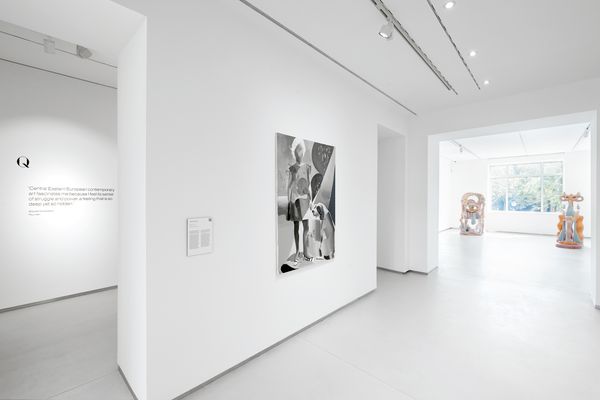The Czech brand reinterprets the tradition of indigo printing to contribute to sustainable fashion by preserving craftsmanship. Their textiles draw inspiration from the everyday, simple things and besides placing traditional processes in a contemporary context, they still treat them with respect. We spoke with the brand’s founder, Martina Dvorakova from the Czech Republic, and her partner, Ionuț Mirzea from Romania.
Martina and Ionuț are not only partners at work but also in their personal lives. When they met, Martina was running her Made by Ordinary brand herself; and Ionuț, with years of experience in visual merchandising behind him, felt it was time to start his own project. It was a perfect time for both of them to meet, and they are now working together to build and take the Made by Ordinary brand forward. Ionuț, as a fan of woodworking and textile recycling, works on creative product introduction, photo shooting set designs and exhibition installations, while Martina handles all tasks related to branding, communications and the entire production process.
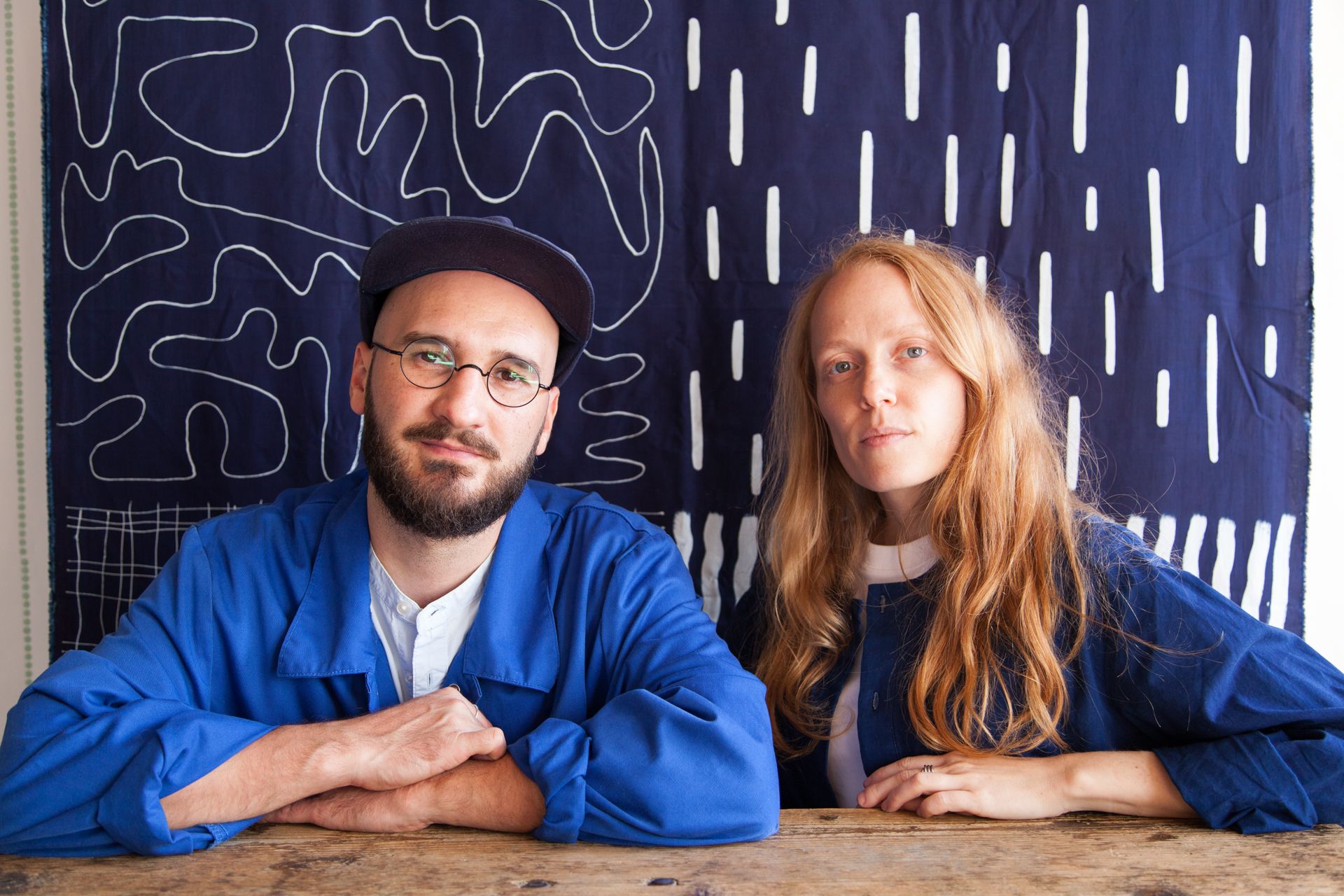
What is Made by Ordinary exactly? What does the brand name mean to you?
Martina Dvorakova: Made By Ordinary was launched in 2016 as a clothing brand aiming to bring attention back to traditional crafts and local artisans (“made by”) and the beauty of everyday life, finding the inspiration in “ordinary” things. Therefore in our first garment collection, we worked with indigo-dyed textiles, traditionally used as a material for work coats. The blue fabric may look ordinary at first glance, but the dyeing process gives each piece a slightly different shade. As the fabric ages, its color gently fades, creating beautiful shades of blue that make each piece not only unique but truly personal.
This is how we first started to collaborate with a small blueprint workshop in the Czech Republic, in southern Moravia to be precise, one of the last two traditional indigo printing workshops still in operation. Today, our work is primarily based on the reinterpretation of traditional blueprinting: we also produce small editions of contemporary, high quality and unique clothing and textile home items. Besides, we also create new products by upcycling discarded garments and textiles to give them new value and life.
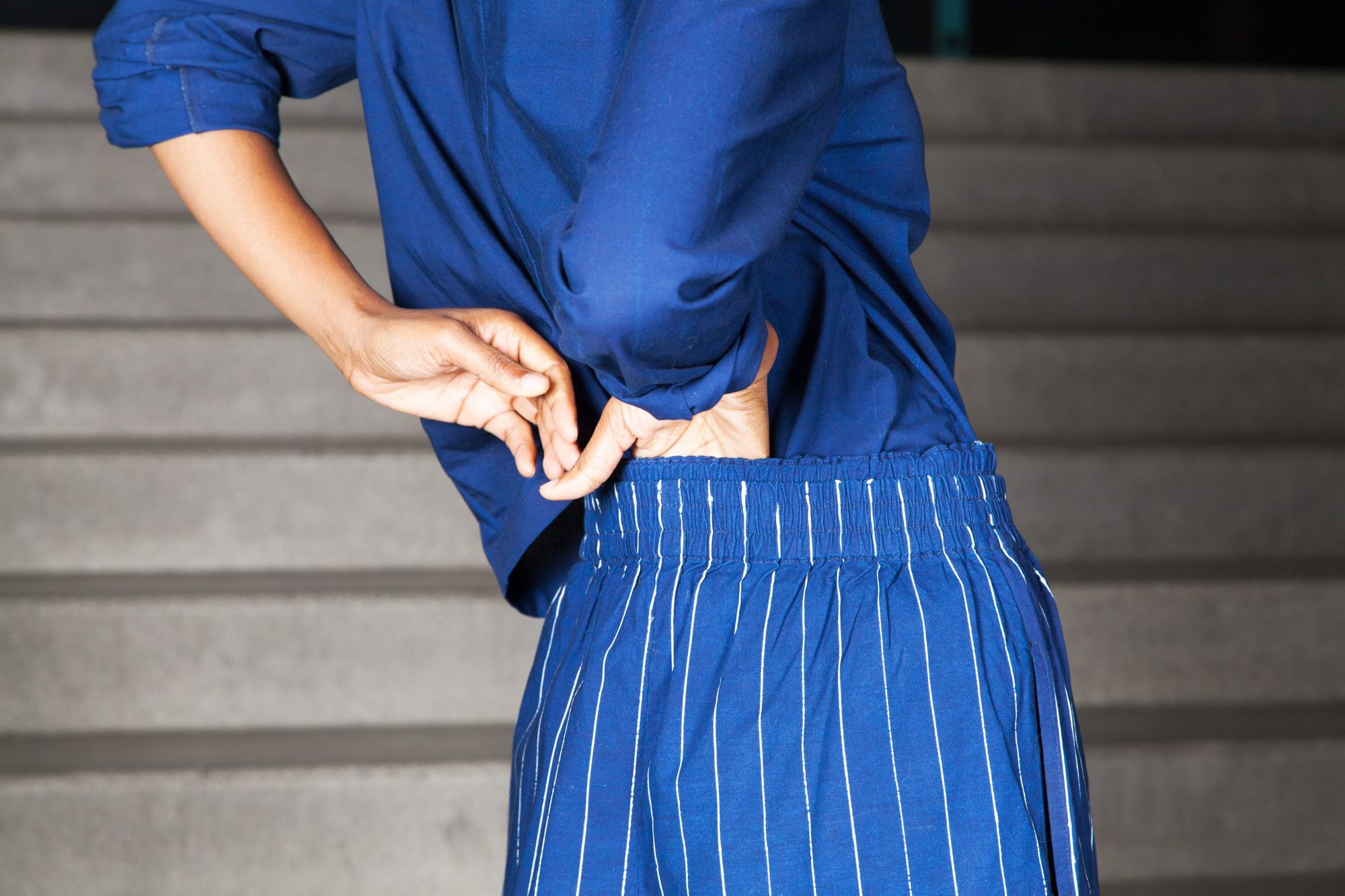
Where does your passion for indigo-dyed fabrics come from? Why did you want to bring forward a brand based on this traditional technique?
M.D.: I studied Fashion and Costume at the University “La Sapienza” in Rome. During my university years, I became interested in traditional crafts that I believed could be a new way to approach sustainable fashion. Living in Rome, I had the opportunity to visit many small workshops and studios of artisans such as shoemakers, glass blowers, sculptors, marble workers, and other artisans, whose diligence, patience and love for their craft I admired very much. When I returned to Prague, I researched traditional textile techniques in Czech lands and simply fell in love with the Czech blueprint.

That’s when I decided to build a brand that reinterprets this technique in a contemporary way while respecting tradition, heritage, and artisans’ work.The purpose of our work is to keep this technique alive by changing the perception of consumers who see traditional products as outdated and offering them unique items that can be used in everyday life.
Indigo-dying is a traditional technique in Hungary, Austria, the Czech Republic, and Slovakia. How do you see the situation of this method today: is it more in need of rescue and preservation, or is there a renewed interest in it?
Ionuț Mirzea: As Martina mentioned earlier, only two traditional indigo block printing workshops operate in the Czech Republic. We are delighted that in 2018 this technique was added to the UNESCO Intangible Heritage List, which has made people even more aware of Czech indigo print. We truly believe that collaboration between designers and craftsmen using traditional knowledge supports many traditional crafts which are at risk of disappearing.
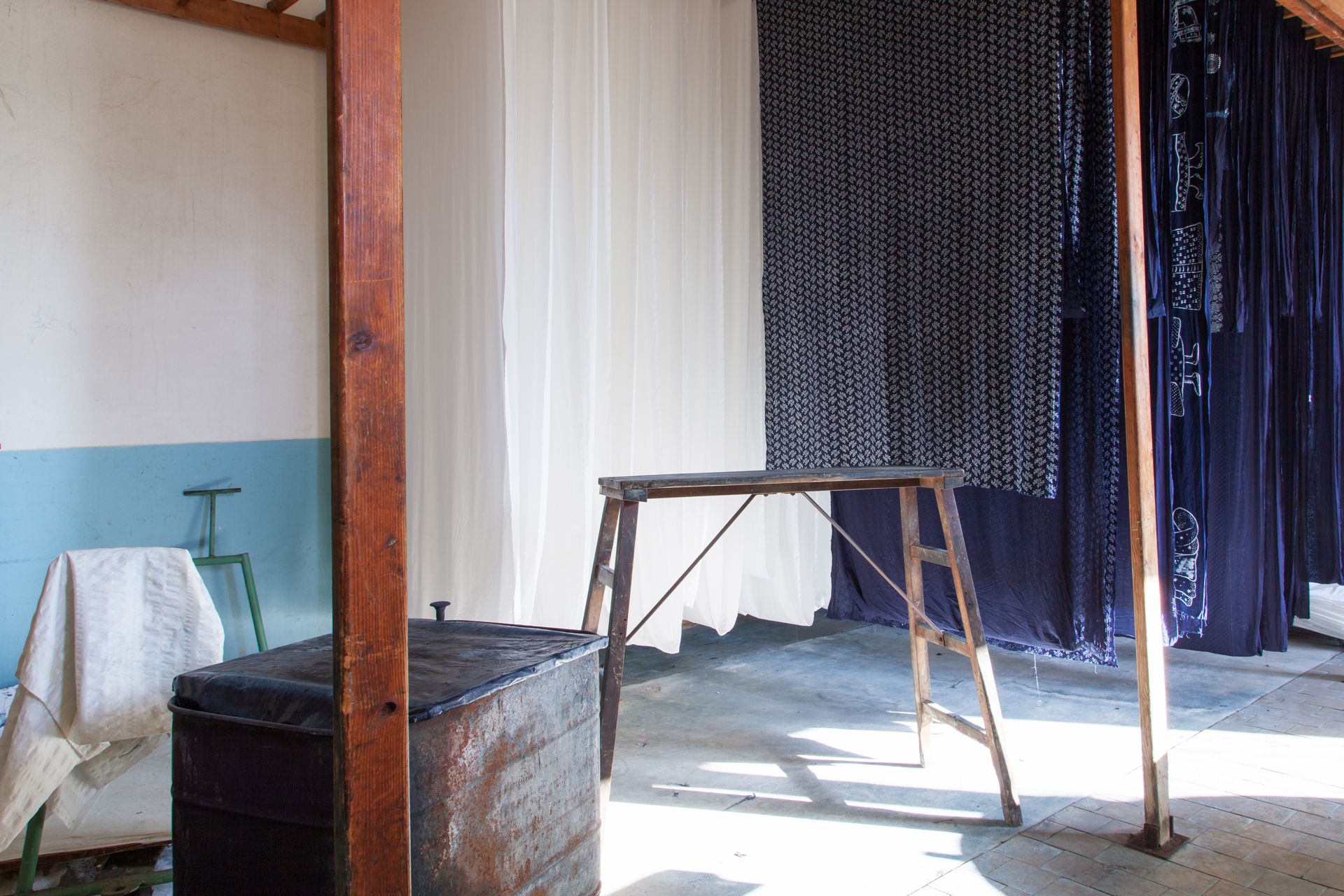
The traditional materials used for blue dyeing are cotton fabric, beeswax, plant-based and indigo dyes; the primary color of the finished fabrics is indigo blue with traditional white ornaments. You have taken a contemporary approach to Made by Ordinary’s repertoire: what are the main differences between the traditional technique and the one you use?
I. M.: The traditional indigo block printing uses original woodblocks to print patterns on a cotton or linen cloth, then dyed in indigo. For Made by Ordinary, the reinterpretation of the technique is based on the creation of textiles: we paint the ornaments on the fabric with a paintbrush or using alternative printing techniques. In addition to this, we also make items from cotton fabrics dyed in indigo with no patterns. After hand-painting the motifs on the fabrics, the dyer of the blueprint workshop in Straznice carefully dyes the materials in a traditional indigo bath. This is how our textiles with modern patterns are made.
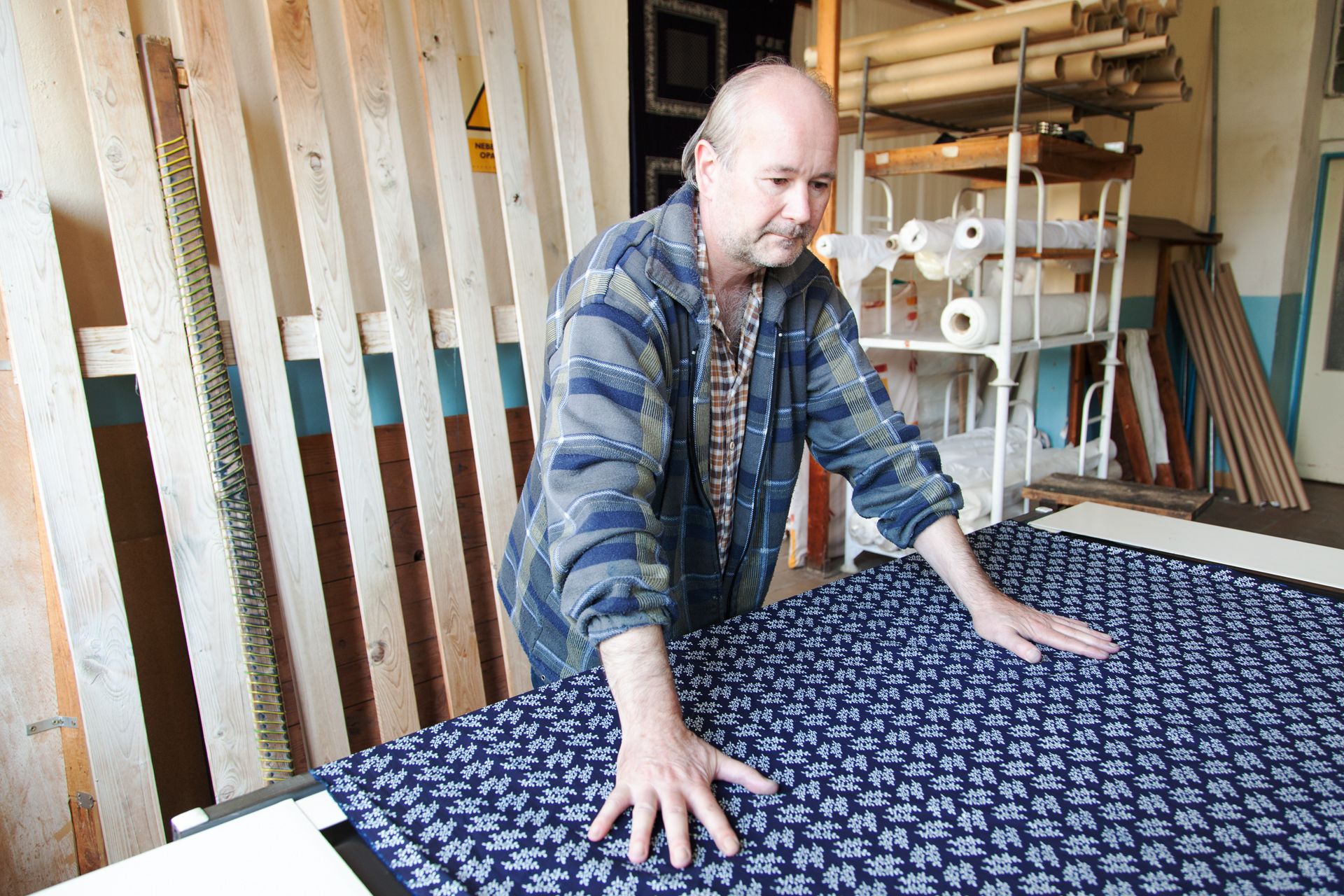
The Designblok event ended on 10 October, where you could showcase your brand in the space of the Museum of Decorative Arts in Prague. What have you prepared exactly for the exhibition?
M. D.: As mentioned above, our previous collection was created by upcycling discarded workwear, using leftover blueprint fabrics of the earlier collections. “Ordinary” pieces that had become worthless for their primary purpose were given a new value and life. At this year’s Designblok, we didn’t present clothes, instead, we showed our new home textile: our installation featured tablecloths, tea towels and placemats. We collaborated with the blueprint workshop to create textile items with a contemporary design suitable for our modern ways of living. These, besides being unique, handmade objects, tell the story of each person who was involved in making them. Thus, as part of the exhibition, we also displayed photographs of the craftsmen who work in the workshops.
In addition, when we create our products, we collect old textiles and keep them just for inspiration. We have now decided to give these precious items a new life in the form of upcycling. Therefore, one part of our current edition presented at the Designblok exhibition was dedicated to old indigo-dyed tablecloths, whose flaws and signs of usage were covered by indigo blue. This gave them a new purpose, just like it did to our clothes.
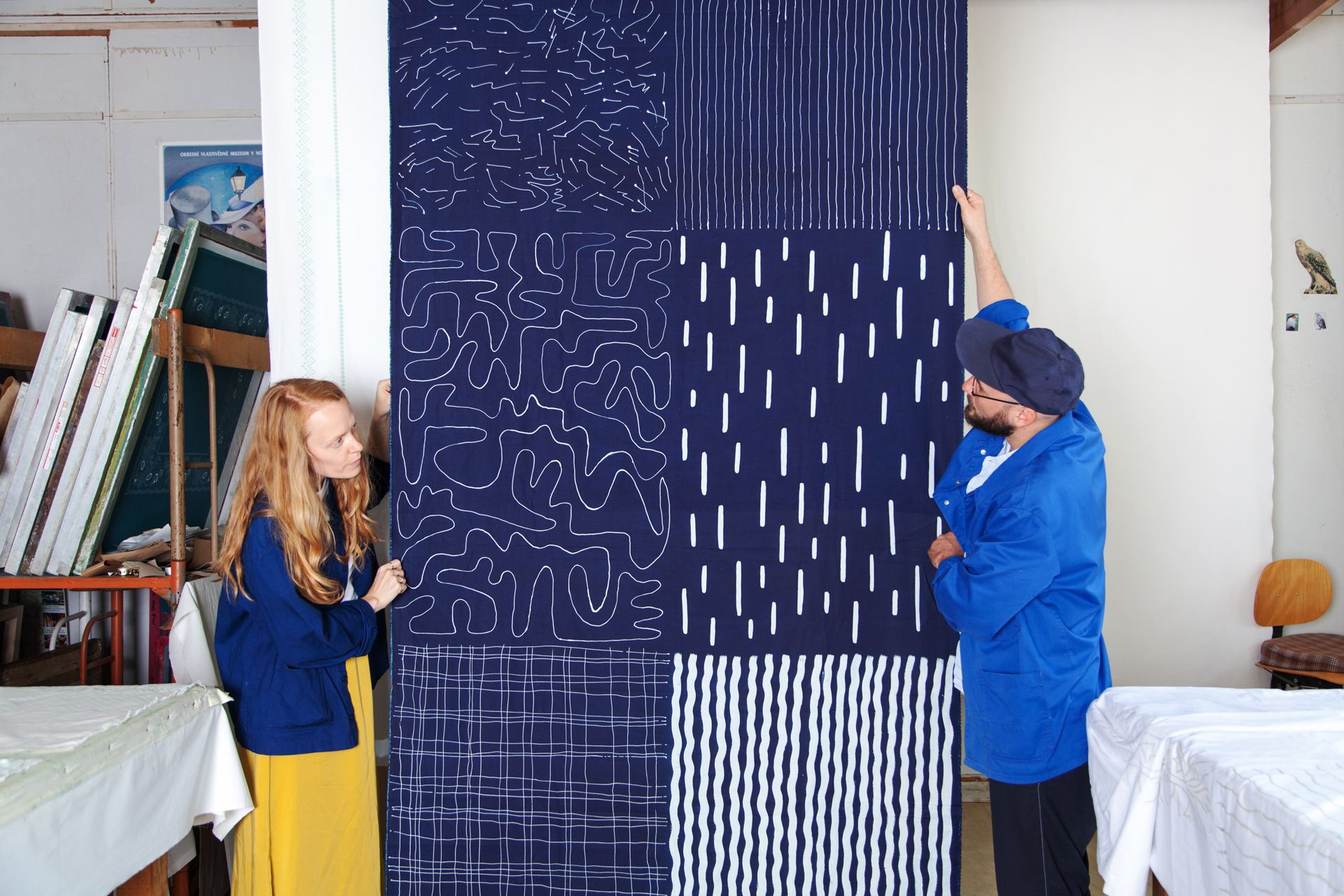
What novelties can we expect from you soon? What are your plans?
I. M.: We want to continue our work as a lifestyle brand, creating objects that we like to surround ourselves with day to day while working with old techniques and local artisans. We plan to participate in international design fairs to spread our story and introduce more people to traditional Czech blueprint textiles.
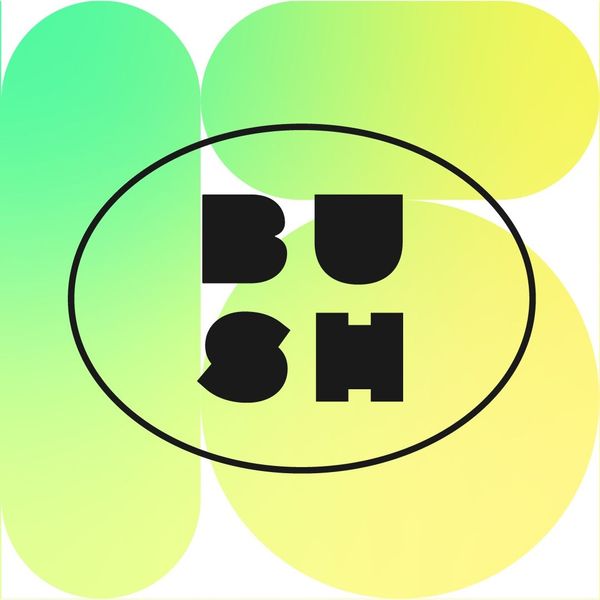
Event | BUSH, the club festival of the East, starts today!

Not just smart, but beautiful too–Educational illustration won award
